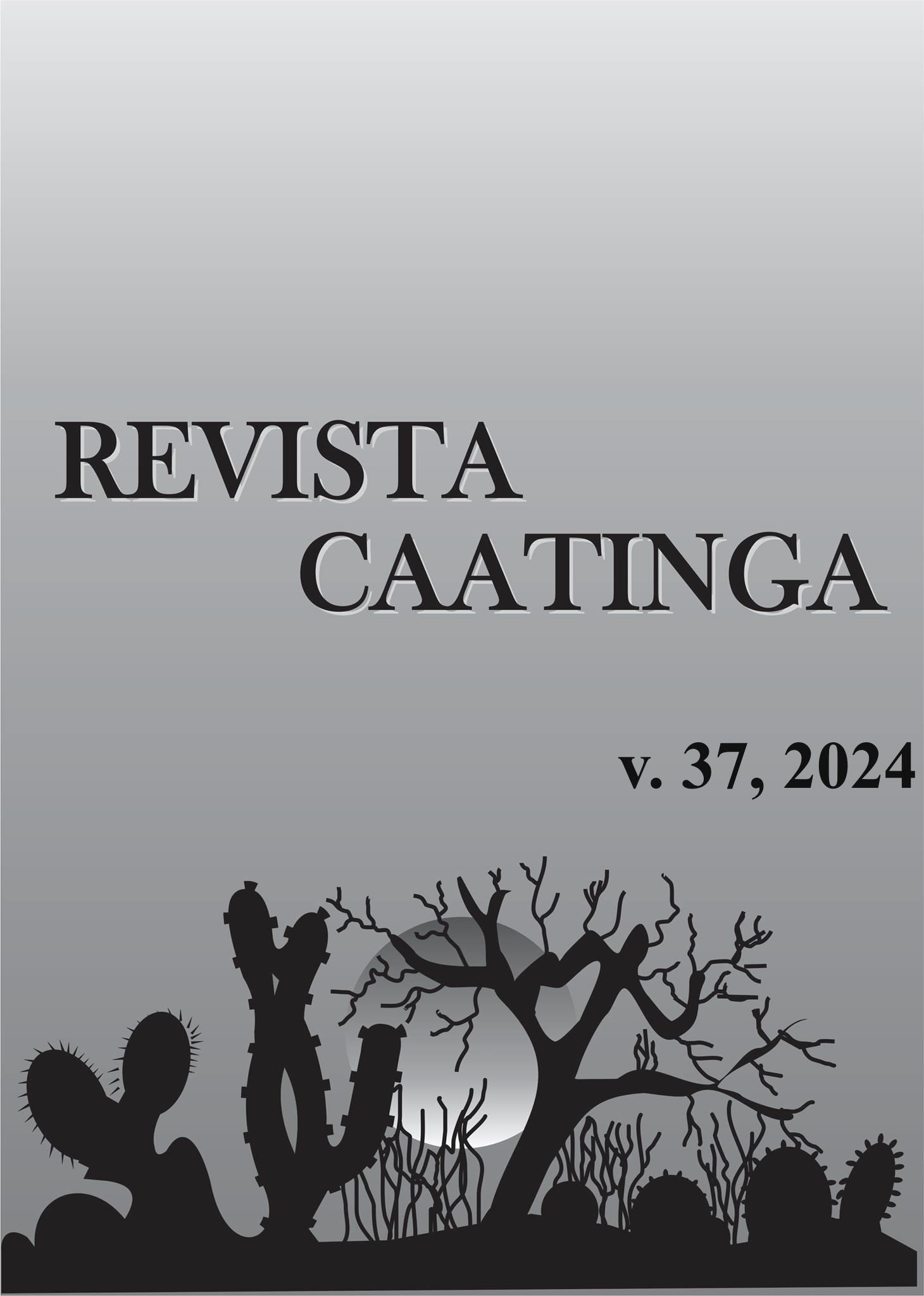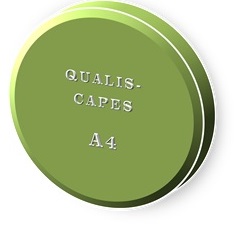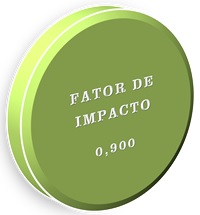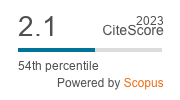Bioactivity of extracts of Ocimum campechianum in the development of Ascia monuste orseis
DOI:
https://doi.org/10.1590/1983-21252024v3712318rcKeywords:
Bioinsecticide. Alternative control. Chicken basil. Cabbage leafworm. Feeding preference.Abstract
The caterpillar Ascia monuste orseis (Godart) (Lepidoptera: Pieridae) stands out as one of the main defoliating pests of brassicas. To mitigate the damage and reduce the impact on human health and the environment that results from the persistent and indiscriminate use of chemical insecticides, it is crucial to consider the use of botanical insecticides as a fundamental alternative for pest control. The aim was therefore to investigate the stimulus-response of the hydroalcoholic crude extract of Ocimum campechianum and of its dichloromethane (DCM) fraction on A. monuste orseis. Leaf consumption (cm2) of caterpillars exposed to the extract, caterpillar mortality in 24 h, total caterpillar mortality, pupal mortality, pupal period duration, and morphological malformation in adults were evaluated. Feeding the caterpillars for eight days with cabbage impregnated with the crude extract and its DCM fraction resulted in decreased caterpillar feeding, increased larval mortality (90%), lengthening of the pupal period (two days), and an increase in adult deformation (50%). Therefore, the crude extract of O. campechianum and its DCM fraction have potential for use in the alternative control of A. monuste orseis.
Downloads
References
ANDRADE, C. A. et al. Avaliação da atividade antibacteriana e triagem fitoquímica das flores de Acacia podalyriifolia A. Cunn. ex G. Don Leguminosae-Mimosoideae. Revista Brasileira de Farmacognosia, 15: 13-15, 2005.
BITTENCOURT-RODRIGUES, R. S.; ZUCOLOTO, F. How feeding on young and old leaves affects the performance of Ascia monuste orseis (Godart) (Lepidoptera, Pieridae). Revista Brasileira de Entomologia, 53: 102-106, 2009.
CAAMAL-HERRERA, I. O. et al. Antimicrobial and antiproliferative activity of essential oil, aqueous and ethanolic extracts of Ocimum micranthum Willd leaves. BMC Complementary and Alternative Medicine, 18: 2-9, 2018.
CABALLERO-GALLARDO, K. et al. Plants cultivated in Choco, Colombia, as source of repellents against Tribolium castaneum (Herbst). Journal of Asia-Pacific Entomology, 17: 753-759, 2014.
CARVALHO-NETO, M. F. et al. Phytochemical profile of cansanção nettle extracts and their bioactivities on cabbage caterpillar. Pesquisa Agropecuária Brasileira, 52: 841-848, 2017.
FERNANDES, C. C. et al. Salicilatos isolados de folhas e talos de Salix martiana Leyb. (Salicaceae). Química Nova, 32: 983-986, 2009.
JARAMILLO, B. E. C.; DUARTE, E. R.; DELGADO, W. Bioactividad del aceite esencial de Ocimum micranthum Willd, recolectado en el departamento de Bolívar, Colombia. Revista Cubana de Plantas Medicinales, 19: 185-196, 2014.
LUCENA, D. C. et al. Biological activity of Piper aduncum extracts on Anticarsia gemmatalis (Hübner) (Lepidoptera: Erebidae) and Spodoptera frugiperda (J.E. Smith) (Lepidoptera: Noctuidae). Anais da Academia Brasileira de Ciências, 89: 1869-1879, 2017.
MAPELI, N. C. et al. Deterrência alimentar em Ascia monuste orseis Godart (Lepidoptera: Pieridae) induzida por soluções homeopáticas. Revista Ceres, 62: 184-190, 2015.
MOTA, M. S. C. S. et al. Potential of allelochemicals from basil (Ocimum micranthum Willd) to control whitefly (Aleurodicus cocois (Curtis, 1846)) in cashew nut crop (Anacardium occidentale L.). Allelopathy Journal, 40:197-208, 2017.
NOGUEIRA, L. et al. Attractiveness, non-preference for feeding and oviposition to Ascia monuste orseis Godart (Lepidoptera: Pieridae) in collard greens. Arquivos do Instituto Biológico, 85: e0362017, 2018.
PANDEY, A. K.; SINGH, P.; TRIPATHI, N. N. Chemistry and bioactivities of essential oils of some Ocimum species: an overview. Asian Pacific Journal of Tropical Biomedicine, 4: 682-694, 2014.
PEREIRA, R. C. A.; MOREIRA, M. R.; LIMA, R. B. Cultivo de alfavaca-de- galinha (Ocimum micranthum Willd). Fortaleza, CE: Embrapa Agroindústria Tropical, 2009. 2 p. (Comunicado Técnico, 138).
SANTOS, A. C. V. et al. Extratos de Ocimum campechianum para controle de lagartas Ascia monuste orseis: respostas sobre preferência e desenvolvimento. Revista Verde, 19: 37-44, 2024.
SARATE, P. J. et al. Developmental and digestive flexibilities in the midgut of a polyphagous pest, the cotton bollworm, Helicoverpa armigera. Journal of Insect Science, 42: 1-16, 2012.
SILVA, A. L. et al. Composição química do óleo essencial de folhas de três amostras de alfavaca coletadas em Manaus - AM. Horticultura Brasileira, 29: 4782-4786, 2011.
SILVA, M. G. V.; SILVA, F. O.; MATOS, F. J. A. Chemical composition of leaves essential oil of Ocimum micranthum Willd growing Brazil northeast, during daytime and at different stages of development. Journal of Essential Oil Research, 16: 36-40, 2004.
SINGH, P. et al. Insecticidal potential of defense metabolites from Ocimum kilimandscharicum against Helicoverpa armigera. Plos One, 9: 1-9, 2014.
SOUSA, S. T. Estudo da atividade biológica de Ocimum campechianum Mill. e determinação de seu perfil fitoquímico. 2004. 76 f. Dissertação (Mestrado em Ciências Farmacêuticas: Área de concentração em Produtos Naturais) – Universidade Federal de Pernambuco, Recife, 2004.
ZHAO, X. et al. Exploration of novel botanical insecticide leads: synthesis and insecticidal activity of β‑dihydroagarofuran derivatives. Journal of Agricultural and Food Chemistry, 64: 1503-1508, 2016.
Downloads
Published
Issue
Section
License
Os Autores que publicam na Revista Caatinga concordam com os seguintes termos:
a) Os Autores mantêm os direitos autorais e concedem à revista o direito de primeira publicação, com o trabalho simultaneamente licenciado sob a Licença Creative Commons do tipo atribuição CC-BY, para todo o conteúdo do periódico, exceto onde estiver identificado, que permite o compartilhamento do trabalho com reconhecimento da autoria e publicação inicial nesta revista, sem fins comerciais.
b) Os Autores têm autorização para distribuição não-exclusiva da versão do trabalho publicada nesta revista (ex.: publicar em repositório institucional ou como capítulo de livro), com reconhecimento de autoria e publicação inicial nesta revista.
c) Os Autores têm permissão e são estimulados a publicar e distribuir seu trabalho online (ex.: em repositórios institucionais ou na sua página pessoal) a qualquer ponto antes ou durante o processo editorial, já que isso pode gerar alterações produtivas, bem como aumentar o impacto e a citação do trabalho publicado (Veja O Efeito do Acesso Livre).







